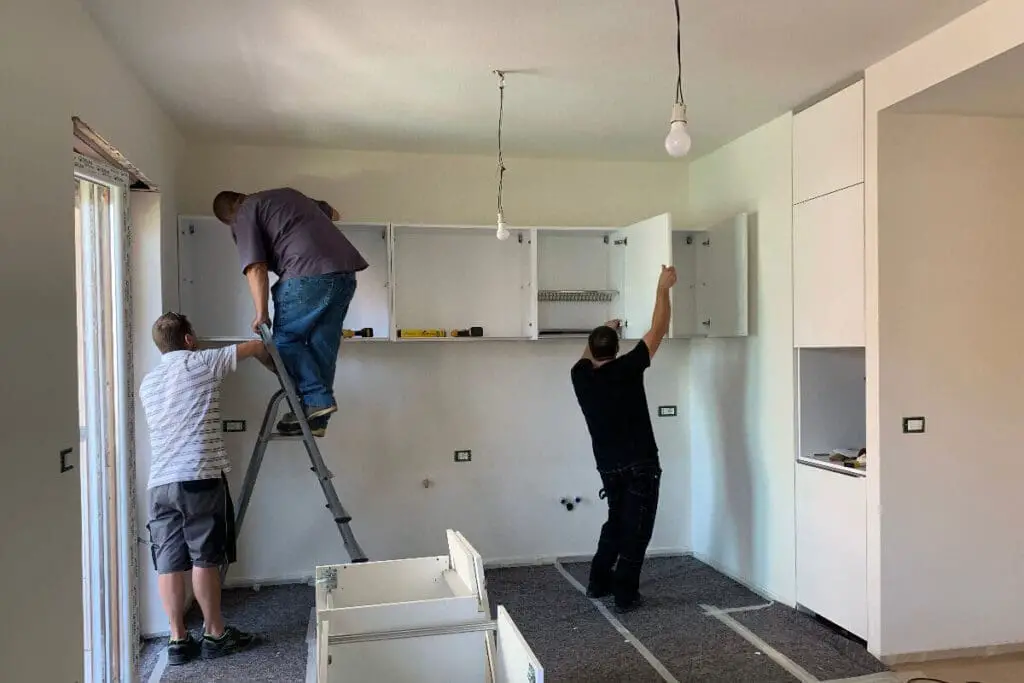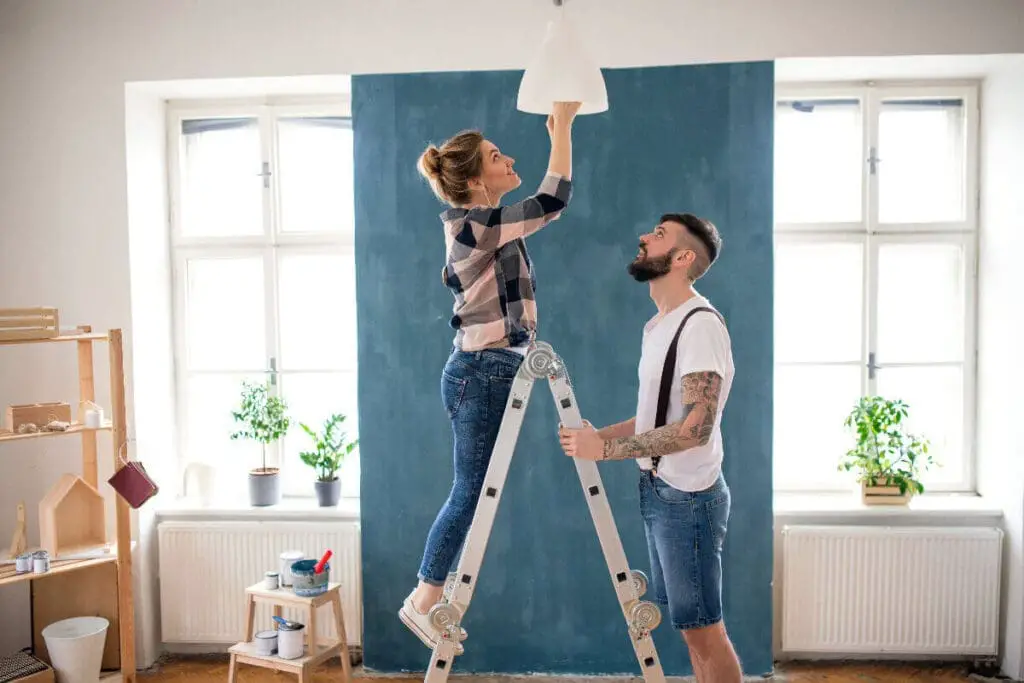Most people think their home is the most important investment they will ever make. Their home is essential to them.
In the quest to craft a home that marries functionality with visual allure, they will likely encounter two commonly mentioned concepts: home improvement and home decor. Though easy to confuse for the novice, these separate spheres enrich your home experience in unique ways.
What Is The Difference Between Home Improvement And Home Decor Items?
When it comes to creating a living space that’s both functional and aesthetically pleasing, you’ll often hear two terms thrown around: home improvement and home decor. While they may seem interchangeable to the uninitiated, they are, in fact, two distinct areas. Both contribute to enhancing your living environment but do so in vastly different ways.
Read on as we define Home Improvement Vs. Home Decor:
Defining Home Improvement
Home improvement involves changes that increase the home’s value, functionality, or safety. These changes are usually more permanent and often require professional expertise.

Typical home improvement projects include kitchen or bathroom remodeling, installations like adding a new roof, or enhancements like building a patio or a deck.
Defining Home Decor
On the other hand, home decor refers to the art of decorating a home to make it more aesthetically pleasing. Unlike home improvement projects, these are usually simple to execute and may not necessarily add to the home’s value tangibly.

The scope includes everything from choosing a color scheme and matching furniture to selecting accessories like curtains, rugs, and art pieces.
15 Ways For The Difference Between Home Improvements And Home Decor
Now that we have a basic understanding of the differences between home improvements and home decor, we can look at 15 different ways they differ.
1. Objective
Home Improvement: The primary objective is functionality and increased home value.
Home Decor: Focuses on aesthetics and personal expression.
2. Investment
Home Improvement: Typically requires a more substantial investment.
Home Decor: This can often be accomplished with a smaller budget.
3. Professional Help
Home Improvement: Often requires skilled labor or professional help.
Home Decor: Mostly DIY-friendly and may not require professional help.
4. Duration Of Project
Home Improvement: These projects are usually long-term.
Home Decor: This can be a quick change.
5. Permanency
Home Improvement: Changes are generally permanent or semi-permanent.
Home Decor: Changes can be easily reversed or updated.
6. Skill Level
Home Improvement: Requires specialized skills such as carpentry, plumbing, or electrical work.
Home Decor: Usually only requires a sense of style or artistic flair.
7. Tools Required
Home Improvement: Often demands specialized tools.
Home Decor: Most tasks can be accomplished with essential household items.
8. Regulations And Permits
Home Improvement: May require city permits or follow building codes.
Home Decor: Usually, there are no permits or regulations to contend with.
9. Impact On Home Value
Home Improvement: Almost always increases home value.
Home Decor: Rarely impacts home value significantly.
10. Seasonal Changes
Home Improvement: Usually not influenced by seasons.
Home Decor: Can be updated according to seasons (e.g., Christmas or summer decor).
11. Planning
Home Improvement: Requires thorough planning and often professional consultation.
Home Decor: Can often be impulsive and spur-of-the-moment.
12. Room Focus
Home Improvement: Usually focuses on functional areas like kitchens and bathrooms.
Home Decor: This can apply to any room, including low-traffic areas.
13. Tangibility
Home Improvement: Results are tangible and measurable (e.g., new square footage from an extension).
Home Decor: Results are often intangible, based on feel and appearance.
14. Financing
Home Improvement: Often eligible for home improvement loans.
Home Decor: Usually self-funded or part of a general home budget.
15. Personalization
Home Improvement: Often generic enhancements that may appeal to future buyers.
Home Decor: Highly personalized, reflecting the owner’s taste and lifestyle.
Home improvement and home decor serve two different but complementary purposes. Home improvement focuses on the structural aspects of your house, seeking to make it a better, more functional place to live.
It involves significant investment and planning but typically pays off by increasing the value of your home.

Home decor, conversely, makes a home beautiful and appealing to the homeowner’s tastes. It’s a way to infuse your personality into your living space without necessarily making permanent changes.

Understanding these differences is vital in making informed decisions about investing time and money in creating a home that meets your needs and reflects who you are. Whether you want to renovate or refresh your home, acknowledging these distinct aspects will help you attain a balanced, enjoyable living space.
If you want to manufacture home decor products in Asia, we would love to discuss how Mondoro can help you. We can produce for you a variety of home decor products.
Find out more about how Mondoro can help you create, develop, and manufacture excellent home decor and furniture products – don’t hesitate to contact me, Anita. Check out my email by clicking here or become a part of our community and join our newsletter by clicking here.
Mondoro gives out a FREE Lookbook to anyone interested. You can receive a copy of our latest Lookbook by clicking here.
Listen to our Podcast called Global Trade Gal. You can find it on all major podcast platforms. Try out listening to one of our podcasts by clicking here.
Subscribe to our Mondoro Company Limited YouTube Channel with great videos and information by clicking here.
Related Content
The Tre Natural Color Trend for Home Decor and Home Furniture
Tre means bamboo. But it also helps to symbolize the strength and ability to be resilient. The Tre trend concerns nature as part of your life and home. The Tre natural color palette has a lot of lush green tones. The Tre trend can be used with other home decor and furniture trends.
You can discover more by reading The Tre Natural Color Trend for Home Decor and Home Furniture by clicking here.
Can Cane Furniture Be Left Outside?
Cane furniture is not outdoor weather-resistant; manufacturers produce outdoor weather-resistant furniture from synthetic, not natural, cane materials. Throughout history, cane furniture was in outdoor settings in many parts of the world; during that time, there was no genuinely outdoor weather-resistant furniture.
You can learn more by reading Can Cane Furniture Be Left Outside? by clicking here.
What Is The Difference Between Rattan, Wicker, And Cane Furniture?
Rattan is a type of palm or vine that grows in the jungles of Southeast Asia. Rattan refers to a kind of natural material. Wicker is a type of weave using rattan materials. Cane also refers to a type of weave that is usually woven using rattan material.
You can learn more by reading our blog What Is The Difference Between Rattan, Wicker, And Cane Furniture? by clicking here.


